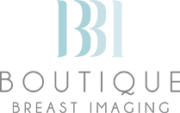How Does Boutique Breast Imaging (BBI) Provide Better Care?
Boutique Breast Imaging is owned and operated by Breast Imaging Radiologists who want to take back control and provide superior patient care. The breast radiologists have acquired the best equipment, technology and staff to provide the best imaging quality. The breast radiologists take the time to talk to and examine the patients, show patients their images, discuss tailored screening and follow-up recommendations, and provide patient education. The breast radiologist understands the high level of anxiety that comes with breast cancer screening and does his/her best to schedule the diagnostic mammogram, ultrasound, biopsy and staging MRI all within a week, providing a surgeon with all reports, pathology and imaging needed for treatment planning and surgery scheduling, and providing the patient with “answers” and “expectations” that alleviate anxiety and fear. Most importantly, the breast radiologist has been subspecialty trained, beyond board certification for the American College of Radiology, to diagnose breast cancer and other issues of the breast, thereby providing the best and most accurate care for patients.
True Life Patient Examples:
1) A 25-year-old patient comes in with a palpable lump and undergoes an ultrasound. When the ultrasound technologist does not find any abnormality and reports this to the radiologist, (and most general radiologists would have sent the patient away to follow up with their primary care physician), the breast radiologist does a physical exam on the patient and targets the ultrasound to the concerning abnormality, diagnosing an invasive breast cancer. That young patient might not have survived her breast cancer had she been delayed significantly in diagnosis and treatment.
2) A 45-year-old woman seeks a second opinion after a Recall abnormality is evaluated as “normal” by a general radiologist. A first look at the images by the breast radiologist reveals a breast cancer, subsequently targeted and detected on ultrasound. That patient would have had a delay in breast cancer diagnosis, not able to undergo just a lumpectomy and no chemotherapy, as she successfully did.
3) A 37-year-old woman is recommended for a biopsy at an outside imaging center (by a general radiologist). The breast radiologist performs a few additional mammogram images with ultrasound and determines that the “suspected lesion” is benign and related to previous trauma (classic fat necrosis). No biopsy is needed.
4) A 60-year-old woman with history of breast cancer seeks follow-up imaging, and learns from the breast radiologist that her best method for screening for her dense breast tissue includes supplemental screening breast MRI. Her breast radiologist detects an early second malignancy in her opposite breast, requiring minimal surgery and no chemotherapy.
5) An 82-year-old woman is talked into undergoing a screening mammogram (she thought she “was all done with those mammogram exams”!) and a very small cancer is detected and removed surgically (small lumpectomy outpatient surgery), with no need for additional treatment other than an anti-estrogen pill. Had she ignored the mammogram, that same cancer likely would have grown to need extensive surgery and treatment (difficult to undergo at her age), significantly disrupting and/or shortening her life.
6) A 56-year-old woman presents for an ultrasound of her lymph nodes in her axilla, prior to undergoing a skin cancer removal in that upper extremity. Although “not part of the examination”, the breast radiologist reviews her recent screening mammogram (called “normal” by a general radiologist) and detects a highly suspicious lesion in the opposite breast, subsequently biopsied as a Stage 1 breast cancer, curable.
7) A 35-year-old African-American woman undergoes a diagnostic mammogram and sonogram for a palpable lump that appears characteristic for a benign fibroadenoma, commonly identified in African-American women. However, her myGeneHistory survey and risk calculation performed at intake indicated a 25% lifetime risk for breast cancer (which is high) and a recommendation for genetic testing. The woman agreed to undergo genetic testing (saliva test) while at the breast center, determining that she had a BRCA2 gene mutation that significantly increased her risk for breast cancer. Genetic counseling was offered in addition to her being recommended for annual breast MRI screening as well as entered into a High Risk Screening program with a breast surgeon and oncologist for close evaluation and offerings of risk-reducing medications or surgery. Had this patient just been seen by a general radiologist / general imaging center, her mutation may have never been detected and potentially life-saving recommendations made.
